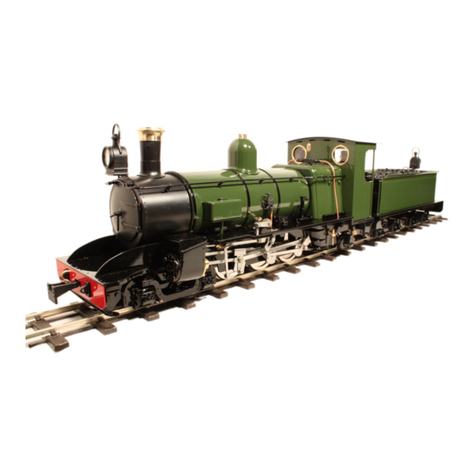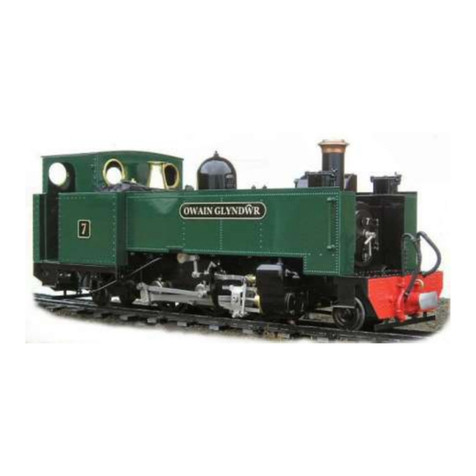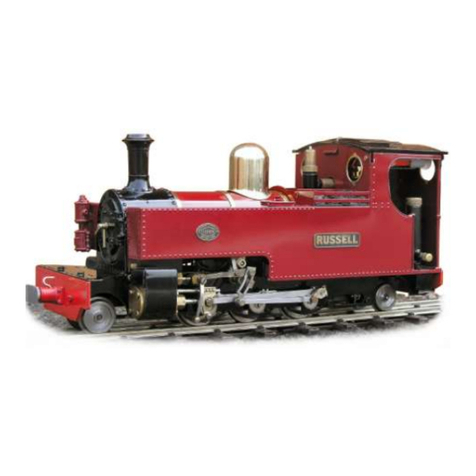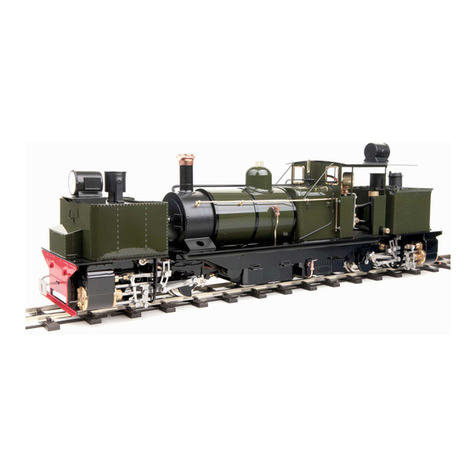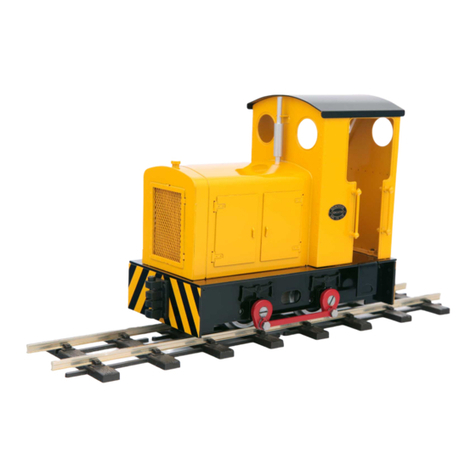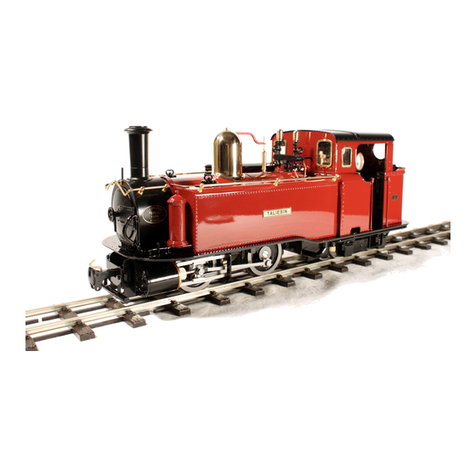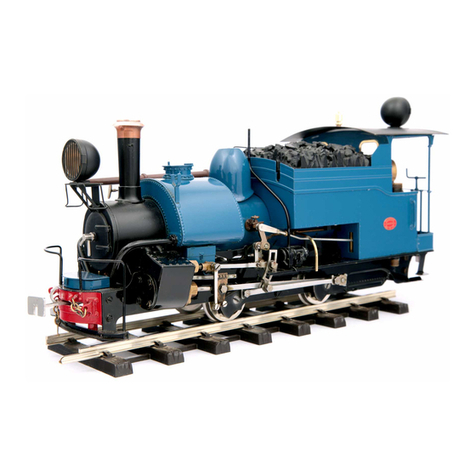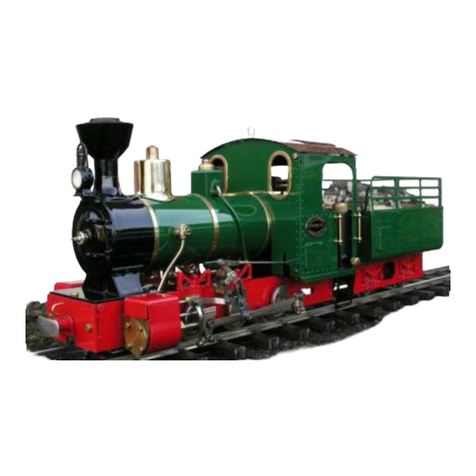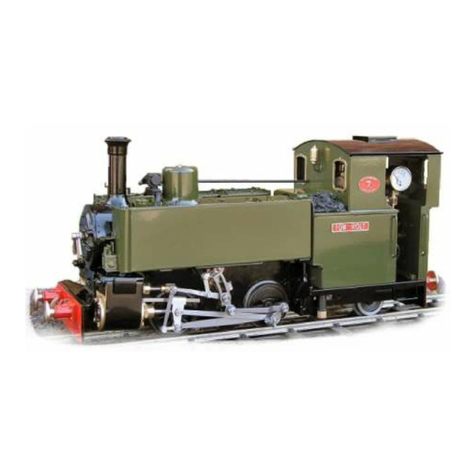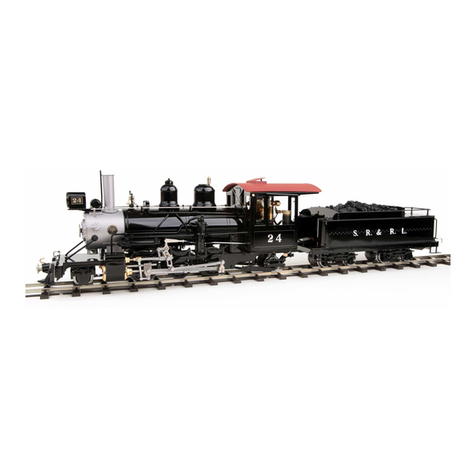chimney and slowly open the gas regulator by turning it anti-clockwise. The
gas should ignite almost immediately with a pop as the flame travels down the
chimney and into the boiler tube. The burner should be audible but not too
loud.
NOTE as stated above, the gas regulator should be opened slowly until the
burner ignites. If opened too quickly, particularly when the engine is cold or if
the gas tank has just been filled, it is possible that the flame may not travel
back into the boiler flue but stay in the smokebox. If this should happen, the
burner will sound quite different to normal and the blue flame will be visible
in the smokebox if viewed down the chimney from a safe height. Should this
happen, turn off the gas immediately or damage may result and then re-light
it. If the problem persists and it is not possible to ignite the burner correctly,
then a dirty jet should be suspected and cleaned as detailed on page 14.
For the first couple of minutes keep the burner on low. This is important, as
until it warms up, the flame will be a little unstable and turning it up too much
could cause it to go out. Also, with a completely full tank, liquid gas could be
drawn off instead of vaporised gas, which can also extinguish the flame.
After a couple of minutes, the gas control valve can be opened more to speed
up steam raising. Open the gas regulator slowly to about one full turn. The full
range of adjustment (closed to fully open) is achieved within the first full
rotation of the gas regulator knob any more is unnecessary.
RUNNING THE LOCOMOTIVE
When full working pressure has been reached (between 35 and 40psi), the
safety valve will start to blow off steam. Steam generation can be controlled
by the gas valve in the right hand cab doorway. If the safety valve blows off
frequently during running, then too much steam is being produced, which
wastes water and gas. Turning down the burner will decrease the amount of
steam created. Conversely, if steam pressure is not maintained during a run,
then the burner should be turned up. After a few minutes of running it may be
noticed that the gas pressure through the burner has increased. This is due to
the gas tank becoming warmer and so increasing the gas pressure. Simply turn
the gas down –this may need to be performed several times during a run. The
art of balancing steam generation to the operational requirement by the
adjustment of the gas control valve will quickly be learned.
The gas tank has a duration of about 25 minutes, though this will vary
depending on gas valve setting. The boiler should not be allowed to run dry,
and the gas tank capacity is such that the gas should run out before the water.
When the gas is fully used up, the steam pressure in the boiler will be seen to
8
